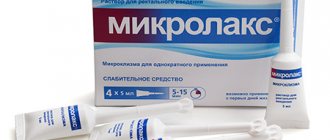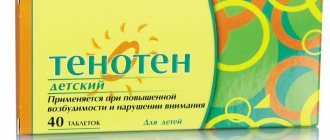Children are not much less likely than adults to suffer from headaches and attacks of dizziness. In some cases, they occur due to relatively harmless reasons, for example, mental fatigue, but in others they can be symptoms of dangerous diseases, the root of which lies in damage to the vessels, nerves, discs and vertebrae of the cervical spine. The lifestyle of most modern children creates strong preconditions for the development of various pathologies, as a result of which there is a sharp increase in the cases of their diagnosis in children of all ages, including preschoolers. This poses a serious threat to health and significantly affects the quality of learning. Therefore, it is important to diagnose existing violations in a timely manner and take measures to eliminate them.
Features of the cervical spine
The cervical spine is formed by 7 vertebrae, the upper of which is adjacent to the bones of the skull and is called the atlas. This is the only vertebra that does not have a cartilaginous layer (intervertebral disc) with the next one - the axis. It is also distinguished from all others by its unusual shape.
In general, the cervical spine is more complex than the thoracic or lumbar spine, and at the same time much more vulnerable. Its vertebrae are the smallest, and their structural features ensure high mobility of the neck.
It is thanks to this that a person can change the position of the head in many directions with a fairly large amplitude. But the structural features of the cervical spine also provide a fairly high risk of developing changes in it, which can also occur in children, causing headaches and attacks of dizziness. This:
- Weakness of the neck muscles, as a result of which the spine does not receive proper support, and increased loads, for example, prolonged sitting with a bowed head or prolonged maintenance of another forced position, leads to rapid wear of the intervertebral discs and the development of osteochondrosis.
- The passage of large blood vessels called vertebral arteries through natural openings in the vertebrae of the cervical region. They are responsible for the blood supply to the brain. Therefore, when diseases of the cervical spine occur or there are congenital developmental anomalies, they can become bent or pinched, which leads to a decrease in the amount of blood entering the brain.
- There is a high risk of injury to the nerve roots that extend from the spinal cord in pairs at the level of each vertebra, if even minor deformities occur, including a decrease in the height of the intervertebral discs.
Non-childish loads
Even very young children can have headaches. Another thing is that it is more difficult to identify such a symptom in them, because it is more difficult for children to describe exactly what they feel. At the same time, only a few types of headaches manifest themselves with instrumental research methods, so neurologists usually base their diagnosis on the patient’s complaints. For example, if the description includes intense headache, sensitivity to light and sounds, nausea, then with a probability of about 90% we can say that it is a migraine. But children 3–4 years old are simply not able to express such complex sensations in words.
In addition, by the age of 6–7 years, in addition to well-formed speech, children also experience drastic changes in their lives associated with the start of school. The usual schedule and environment change, mental stress increases - such stress often causes headaches.
Health mugs. How to understand which loads are too much for a child? More details
Causes of headaches and dizziness in children
Thus, the mechanism behind the development of headaches and dizziness most often lies in:
- impaired blood circulation in the vertebral arteries - vertebral artery syndrome;
- pathological changes in the cervical vertebrae - osteochondrosis, spondylolisthesis, congenital anomalies of the spinal canal;
- posture disorders.
Often, in even young children, the cause of headaches and dizziness is vegetative-vascular dystonia (VSD), i.e. dysfunction of the autonomic nervous system is observed. It most often develops if close relatives of the child also have such disorders, but VSD can be acquired during life, and at any age.
In all cases, the cause of the frequent occurrence of headaches and dizziness in children is either a violation of blood flow and the resulting hypoxia of the brain, or irritation of the nerves extending from the spinal cord by one or another anatomical structure.
However, all neck diseases are characterized by a protracted course and the development of persistent functional impairments, which, if left untreated, can not only negatively affect the child’s well-being and ability to learn, but can even lead to disability. Therefore, if a child of any age experiences frequent headaches or dizziness, it is necessary to immediately contact a neurologist. A comprehensive examination and prescription of treatment appropriate to the situation will help solve the problem and avoid the development of complications.
Vertebral artery syndrome in children
Vertebral artery syndrome is a consequence of circulatory problems in one of these two large vessels. It is characterized by a long-term headache that originates in the back of the head and spreads to the temples and forehead. Sometimes spasms of one or both vertebral arteries at once reach such strength that the child may lose consciousness.
The reasons for the development of the disease are quite diverse. They may consist of natural narrowness and tortuosity of the vertebral arteries, traumatic injury, osteochondrosis of the cervical spine and spondylolisthesis. With vertebral artery syndrome acquired during life, they can be pinched as a result of compression by edematous tissues and spasmodic muscles, which is not uncommon for the inflammatory process that develops in osteochondrosis. Also, the reason for the decrease in the lumen of blood vessels may lie in irritation of the nerves that regulate their function.
Against the background of circulatory disorders in the so-called vertebrobasilar system, which is part of the circulatory system of the head, the posterior parts of the brain, responsible for the coordination of movements, suffer from a blood deficiency. As a result, this leads not only to attacks of dizziness and headaches in children, but also to:
- tinnitus;
- blurred vision, blurred or double vision;
- surges in blood pressure;
- nausea;
- increased fatigue;
- irritability, the emergence of unreasonable fears;
- feeling of numbness or tingling in the hands.
A distinctive feature of vertebral artery syndrome is the sudden onset of symptoms or their intensification when moving the head.
Vertebral artery syndrome can occur in different forms, the difference between which lies in which of the symptoms of the disease predominates over the others. If a child is more worried about headaches and dizziness, then he most likely may have vestibulo-atactic syndrome or Barre-Lieu syndrome.
The pathology cannot be ignored, since oxygen starvation of the brain can lead to irreversible consequences. In addition, with severe compression of the vertebral arteries, there is a risk of ischemic attacks and stroke. Such a dangerous condition can be differentiated by the occurrence of:
- motor and sensory disorders;
- speech impairment and difficulty swallowing;
- partial or complete sudden loss of vision;
- nausea, vomiting;
- severe dizziness;
- violations of motor coordination.
In such situations, you should immediately call an ambulance for the child.
Osteochondrosis in children
Today, cervical osteochondrosis is increasingly diagnosed in adolescents. This is facilitated by a sedentary lifestyle and addiction to gadgets. The disease is characterized by a decrease in height and wear of the intervertebral discs of the cervical spine, which leads to the convergence of the vertebral bodies and compression of the spinal roots. This is accompanied by pain in the neck and head, and can also cause dizziness. Moreover, the intensity and localization of pain directly depends on the nerve root at the level of which vertebra is pinched:
- the first pair, located immediately under the base of the skull above the 1st cervical vertebra C1, provoke pain in the occipital region;
- C1—C2 – pain in the occipital-parietal region, sleep disturbances;
- C2-C3 – pain in the neck, possible speech impairment due to numbness of the tongue;
- C3-C4 – pain in the area of the collarbone, shoulder girdle, spasms of the muscles of the head and neck, which leads to a diffuse headache;
- C5-C7 – pain in the neck, shoulder blades and arms.
The pain can be localized only on one side, which is caused by pinching of only one of the pair of spinal roots.
Expert Opinion of a Doctor
Also, one cannot ignore psychosomatic problems that can lead to headaches in children. Conflict in the family, an uncomfortable situation in a children's group, at school or kindergarten, the child's fears and experiences play a very important role. And here you cannot do without the help of a child psychologist.
Personal: Goncharenko Irina Mikhailovna
Neurologist, osteopath, chiropractor
Experience: 16 years
How is the treatment carried out?
In addition, pinched nerve roots can provoke the development of other diseases that at first glance are not related to the spine. In fact, compression of nerves can cause disruption of the organs they innervate. Therefore, in such cases, children may be diagnosed with:
- diseases of the inner ear and hearing impairment;
- neuritis of the facial nerve;
- hypertrophy of the palatine tonsils (adenoids);
- frequent tonsillitis, laryngitis;
- thyroid diseases.
These diseases are usually diagnosed without difficulty, and treatment is prescribed as a result. But it is not always sufficiently effective and often allows only temporary remission, since the main cause - pathology of the cervical spine - persists. In such situations, after a few years, the child, who by that time will have become an adult, will face a protrusion or a full-fledged herniation of the intervertebral disc.
Progressive changes in the intervertebral discs can cause the development of vertebral artery syndrome and VSD. Thus, many diseases of the cervical spine are interconnected.
Often children themselves cannot explain that they have dizziness. They just don't know how it should be. Children may say that they have a headache, describe nausea, or try to take a horizontal position. And then only a pediatric neurologist can detect the presence of dizziness when conducting specific tests during the examination of the baby at the appointment.
Spondylolisthesis
Spondylolisthesis is the displacement of the vertebrae relative to each other in the anteroposterior direction. As a result, the intervertebral discs are damaged and spinal roots may be pinched. The consequence is again a headache, as well as disturbances typical of damage to a particular root.
In children, the disease can be a consequence of receiving blows to the neck or birth injuries. This is often complicated by weakness of the neck muscles, which over time leads to progression of the pathology and worsening of the condition.
Scoliosis
Scoliosis accounts for about 30% of all spinal diseases in children. This term refers to the curvature of the spinal column in the lateral plane. The pathology is most typical for schoolchildren, but can also be congenital or develop in preschool age.
Although most often the deformity initially forms in the lumbar spine, over time it can lead to curvature of the entire spine, including the neck. This occurs due to the inclusion of compensatory mechanisms. As the body tries to correct the incorrect position of the spine and maintain the ability to maintain balance, the upper sections bend in the opposite direction, which leads to headaches.
The main causes of scoliosis are:
- incorrect posture when writing or working at a computer;
- uneven distribution of the load on the back when wearing a backpack;
- heavy sports activities started unreasonably early;
- sedentary lifestyle;
- spinal injuries;
- unbalanced diet;
- being overweight.
Most often, scoliosis occurs during periods of active growth of the child, i.e. at 4-6 years and 10-14 years. Therefore, at this time you need to be especially attentive to the spine and monitor your posture.
Parents themselves can notice the curvature of the ridge. In young children, the examination is carried out while lying on their stomach, and in schoolchildren, the examination is carried out while bending forward on straight legs. With scoliosis, differences in the position of the shoulder blades and shoulders, pelvic distortion, asymmetrical arrangement of the gluteal folds, and waist triangles will be noticeable. Children with this spinal pathology tend to slouch and walk with their heads down. However, in the initial stages of pathology development, it can be extremely difficult to notice deviations without instrumental diagnostic methods, and even impossible for an untrained person.
Vegetovascular dystonia
Vegetative-vascular dystonia is not an independent disease, but is a consequence of existing pathological changes, which can be caused by a variety of factors. Even young children can suffer from VSD due to the peculiarities of their constitution. However, more often the pathology is diagnosed after 10 years, since at this time hormonal changes in the body begin to occur. In such situations, the autonomic nervous system may not have time to grow with the child, which will result in vegetative-vascular dystonia and the appearance of:
- headaches;
- irritability;
- memory impairment, concentration;
- weaknesses.
In addition to hormonal fluctuations, the cause of the development of VSD in children can be:
- excessive physical activity that depletes the body;
- smoking, drug use;
- transmission of acute infectious diseases;
- neurological disorders;
- pathologies of the thyroid gland, diabetes mellitus and other endocrine disorders;
- diseases of the cardiovascular system;
- severe psycho-emotional exhaustion, stress, depression.
Great importance when calculating the probability of developing vegetative-vascular dystonia is given to heredity.
Attacks usually occur suddenly after physical exertion or stress. They last on average about 20-30 minutes and may be accompanied by:
- headaches of varying strength, including migraines;
- dizziness;
- sweating;
- tachycardia;
- weakness;
- tinnitus;
- darkening of the eyes with the possibility of losing consciousness;
- anxiety, fear.
VSD can occur in different ways, on the basis of which 4 types are distinguished: hypotonic, hypertensive, cardiac, mixed.
Disease or symptom?
The international classification of headaches today includes about 300 types. They can be divided into two large groups: primary and secondary headaches.
Secondary headache is not an independent disease, but only a symptom that may accompany other pathologies. For example, sinusitis (due to the accumulation of pus, it often hurts in the forehead area). The causes of secondary headaches can be serious, including infections, injuries, even tumors. But, as a rule, in these cases there are other symptoms - fever, hearing impairment, coordination, vision, and lethargy. To relieve such pain, you need to treat the underlying disease with a specialized doctor.
But secondary headache is a rare thing; in 9 out of 10 cases, patients come to doctors with primary headache (PH). And these are independent neurological diseases that arise due to improper functioning of the brain.
When to make an immediate appointment with a doctor
It is necessary to get an appointment with a neurologist as soon as possible if your child has:
- frequently recurring attacks of headache and/or dizziness;
- dizziness lasting more than 20 minutes or loss of consciousness;
- blurred vision;
- involuntary rapid eye movements during an attack;
- tinnitus.
Consultation with a specialist is mandatory if parents or other close relatives suffer from migraines, VSD or vertebral artery syndrome.
But due to his age, the child cannot always complain about his health or describe the nature of the symptoms that bother him. The hardest thing to understand is what worries a child under 3 years old. In such situations, you should make an appointment with a doctor if:
- the occurrence of changes in behavior, increased fatigue, loss of interest in outdoor games;
- frequent anxiety, crying;
- drowsiness, reluctance of the child to wake up.
You can suspect the presence of dizziness by the fact that the child begins to fall more often. Although falls are not uncommon for young children, nevertheless, if the baby suddenly falls out of the blue, involuntarily tries to hold on to a wall or a suitable object, you should ask him to try to walk in a straight line. If the child succeeds in this with difficulty or does not succeed at all, consultation with a neurologist is mandatory.
When a headache occurs, young children may clutch their head and scream or cry. With prolonged attacks, this may be accompanied by nausea, vomiting, weakness and pale skin.
"We are waiting for changes!"
But in first place among the triggers of any type of primary headache in children is emotional stress: high workload, conflicts at home or at school, anxiety, restlessness. Sleep disturbances are also important for migraine: both lack of sleep and long sleep on weekends; and also long-term fasting, low physical activity and lack of water.
It often happens that a child’s headache goes away in the summer, but returns in September. Therefore, the first thing neurologists prescribe for children is not medications, but lifestyle changes. Parents should make sure that their children eat regularly, go to bed on time, get enough rest, and are not overworked or nervous. We need to help the child avoid stress at school and at home, or at least identify its cause, and perhaps consult a psychologist. If lifestyle is not changed, migraines become more frequent and become chronic.
Important
In the past, “vegetative-vascular dystonia” was a popular diagnosis among neurologists. It was a kind of collective image where headaches, depression, panic disorder, and various types of dizziness were sent. In the modern edition of the International Classification of Diseases, this diagnosis is not available, and if the doctor has diagnosed the child with VSD, it is better to look for another neurologist.
First aid for an attack
It is prohibited to give your child any medications on your own without a doctor’s prescription. If parents notice signs of headache or dizziness, they should reassure the child and stay close to him. To alleviate the condition, you should:
- provide bed rest and eliminate all irritants: bright light, TV, gadgets, loud music;
- Give water to drink if you experience nausea; cold water will help reduce its intensity;
- provide fresh air access to the room;
If attacks of dizziness bother your child at night, he should leave a night light on. When he wakes up feeling unwell, fixing your gaze on him will help prevent the condition from getting worse.
If the attack recurs, you must make an appointment with a doctor for examination and treatment.
The baby can’t speak: how can you tell if he has a headache?
It's probably not easy. Especially in the first months of a child’s life and until he is one year old. However, if you “listen” a little to your baby, he himself will “tell” you about what is bothering him.
You should be wary:
- frequent regurgitation or vomiting not associated with food intake (usually in the morning)
- unreasonable restlessness or crying out
- the appearance of a cry on one note in the baby , lasting for several hours
- shaking of the baby's arms and legs (tremor)
- increased pain sensitivity (sometimes even just touching the skin causes a painful cry in the baby)
- presence of ocular signs: strabismus, Greffe's sign (when the eye is lowered down, a white stripe remains between the iris and the upper eyelid)
- bulging and pulsation of the large fontanel (normally it is level with the bones of the skull or sinks somewhat) - observed with increased intracranial pressure
- an increase in the size of the head circumference (most often with hydrocephalus), so it should always be measured and ensure that it corresponds to age standards
- poor sleep : the baby often wakes up or cannot sleep.
Even if a child can already speak, he cannot always provide accurate information about his well-being. As a rule, this is up to 4-5 years of age. Therefore, pay attention to how the baby behaves. If he has a headache, he often puts his hands to his head, eyes or eyebrows, and ruffles his hair.
Diagnosis of the causes of headaches and dizziness
To diagnose the causes of headaches and attacks of dizziness in children, the neurologist examines the patient, and also carefully interviews the patient himself, and, if necessary, his parents. During the examination, the doctor performs a series of neurological tests, the results of which will help assess the extent of the neurological deficit. These data may not be sufficient to make an accurate diagnosis. Therefore, all patients are prescribed an examination that may include:
- X-ray or CT scan of the spine;
- MRI of the spine;
- Ultrasound of neck vessels with Doppler sonography;
- UAC;
- blood chemistry.
The most technically difficult and expensive procedure is MRI, since for 20 minutes you need to lie absolutely motionless in a closed chamber of the device. Therefore, in young patients, the study is usually carried out in a state of medicated sleep.
Based on the results of the examination, the neurologist can already understand exactly what caused the child’s headaches and dizziness and prescribe the most appropriate therapy for a particular situation.
Treatment of headaches and dizziness in children
For each child, treatment tactics are selected strictly individually, but it is always comprehensive. In this case, the doctor takes into account not only the nature of the detected pathological changes, but also the age of the child, existing concomitant diseases and other factors. Therefore, even with the same diagnosis, two different children may need different treatment.
So, the main components of therapy are usually:
- drug treatment;
- manual therapy;
- exercise therapy;
- physiotherapy.
The neurologist may also recommend reviewing the child’s work and rest schedule, taking measures to increase physical activity, increasing the number and duration of walks in the fresh air, normalizing nutrition, purchasing an orthopedic mattress and pillow, etc.
Small children can only be bathed in water whose temperature is not higher than 37°C. Hotter water can cause blood vessels to dilate, which can cause another attack of dizziness.
Drug treatment
The goal of drug treatment is to improve the child’s well-being, relieve the inflammatory process, normalize blood circulation and improve the quality of transmission of nerve impulses. Therefore, for any diagnosis it includes:
- NSAIDs;
- vitamins;
- drugs that improve blood flow.
Additionally, treatment can be supplemented with other drugs that will help eliminate existing disorders, for example, muscle relaxants, cardiac drugs, chondroprotectors, antidepressants, adrenergic blockers, etc.
Manual therapy
Manual therapy is considered one of the most effective and safe methods of treating spinal pathologies in children, but only when performed correctly. Inept actions or incorrectly chosen force of influence can cause significant harm to the child and provoke the development of complications. Therefore, when choosing a specialist, you should be very careful and not trust the health of children to non-professionals with insufficient experience.
Manual therapy of the cervical spine requires particularly high qualifications of the doctor and caution during its implementation.
The essence of the method is a targeted impact on the spine with your hands using methods of mobilization, manipulation, rhythmic mobilization, post-isometric relaxation, etc. This allows you to:
- return the vertebrae to the correct position;
- relieve pressure on the nerves;
- align the spine;
- reduce pressure on the vertebral arteries.
Also during the session, the chiropractor also works on soft tissues, as in a therapeutic massage. This helps improve blood circulation, activate metabolic processes and eliminate muscle spasms, which significantly improves overall well-being. But still, the main goal of manual therapy is direct work with the spine. Moreover, the method has virtually no contraindications, is characterized by the absence of side effects, which no other drug can boast of, and also provides a positive effect on the entire body.
Due to competent study of the entire spine and especially the problem area, it is possible to:
- eliminate the cause of headaches, dizziness and other symptoms, and therefore them;
- increase overall performance;
- strengthen the immune system and adaptive capabilities of the body;
- eliminate the risk of developing diseases of internal organs innervated by the compressed nerve;
- increase neck mobility, eliminate functional blocks;
- improve posture.
Manual therapy can be performed even on infants and children with serious pathologies.
For each patient, the number of sessions and types of manual influence are selected individually. On average, about 10 procedures are required, although a noticeable improvement in well-being can be noticed after the first one. But it is important not to give up treatment after receiving the first results. They must be secured, otherwise the achieved effect will be lost.
Exercise therapy
Physical therapy is one of the simplest, most accessible and effective methods of treating spinal diseases. For each child, the lesson program, as well as exercises, are selected separately, taking into account the diagnosis and general level of physical development. You should not try to find and start performing any exercise therapy complex on your own, since some types of movements or an incorrectly selected load can do a disservice.
Exercise therapy classes begin to be carried out outside the acute period of the disease. Initially, it is recommended to study in special groups or individually, but in any case under the supervision of a specialist. He will help a child of any age master the correct technique for performing each exercise and select the optimal load.
After the program has been finalized and the child follows it flawlessly, it is allowed to continue classes at home. But the effect of physical therapy will only be with daily exercise. It is important to avoid haste, sudden movements, and overexertion. And if pain appears or the condition worsens, you should immediately stop exercising and consult your doctor.








